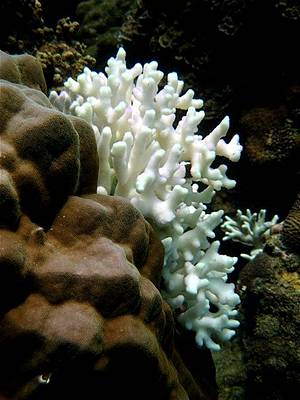Her name is Mocheng, a diabetes patient who just moved to the Centre from Ipoh’s. She is 59 year-old, yet looking wan and sallow beyond her age. She is immobilized but a thin and pale person lying on the sickbed of the centre. Mocheng is a bed ridden who requires full-time care and support. She has two bedsores: one on the right side of her back which has the diameter of a small bowl, and the other one on the right buttock which is smaller yet with meat and bone exposed.
Yesterday was a rainy day but it could not obstruct our plan of going to the Handicapped and Mentally Disabled Children Centre Melaka as we described earlier. After gathered for breakfast, Kok-Liang, Tracy, Cinda and I went to the centre with some friends who joined us for the first time: Perry Gan and Angel were those two in all sincerity to help and Cinda’s father, Gan papa and her brother, Albert Gan who were very supportive and compassionate towards the patients of the centre.
Thomas the supervisor, Amy the nurse and the other staffs were there to greet on our arrival. After handing some second hand goods, we spent an hour chatting with the staff and the patients, trying to understand the centre’s operations and patients better. Again, we met Boy-Boy, the toddler with Down syndrome and just had his heart surgery done. Amy told us that his mother had not been to the centre to visit the child for quite some time. And George the autistic child was still the same old quiet boy except with 3 new friends, the triplets who recently accepted to the centre. They were equally quiet as George, however being hyperactive and craving for food. That gave Perry a bit of headache; he was engaged to play police-and-thief with the trio of keeping them away from stealing food of a disabled elderly.
Everyone at the centre was good and healthy. Just before we left the centre, we were introduced to Mocheng, a new patient of the centre. Nevertheless, it was a new and heartbreaking acquaintance. When Mocheng was first transferred to this centre, the sight of her lying of the bed sent a wave of sympathy to Amy, who then offered her care, kindness and support to Mocheng. Amy would have to reposition bedbound Mocheng every few hours to avoid further bedsore damages and help changing the dressing of the two wounds every 2-3 days. The hydrocolloid dressing used for Mocheng is rather expensive but effective to mold to the pressure sore and helps promote healing and skin growth. After knowing this, Perry went straight to purchase some dressings and donated to the centre in order to help Mocheng.
It was a meanigful visiting to the centre, making us feel lucky and contented with our live. Having said that, we also hope to do our best to help the less fortunate group especially Mocheng. Today, Wee-Peng and I visited to the centre again and handed a medical air mattress which we borrowed from someone, hoping that this bed can assist with the treatment of Mocheng’s bedsores. Soon we will be going to the centre again for donating daily necessities and also looking a good way to help Mocheng.
Thanks to the staffs at the centre for your kindness and caring of the patients. Thanks to the patients for making our day that much more special. Thanks to fellow friends and family for your company and support. May all beings be well and happy.
Unfortunately I didn’t snap any photo to share here, due to the rain keeping me from bringing my gears.

Bill Gates, left, and Warren Buffett, seen in this 2007 photo during the annual Berkshire Hathaway shareholders meeting in Omaha, are trying to persuade other American billionaires to give at least half their wealth to charity.
Gates, Buffett lead campaign to persuade America’s wealthiest to donate their fortunes
A little over a year after Bill Gates and Warren Buffett began hatching a plan over dinner to persuade America’s wealthiest people to give most of their fortunes to charity, more than three-dozen individuals and families have agreed to take part, campaign organizers announced Wednesday.
In addition to Buffett and Gates — America’s two wealthiest individuals, with a combined net worth of $90 billion, according to Forbes — 38 other billionaires have signed The Giving Pledge. They include New York Mayor Michael Bloomberg, entertainment executive Barry Diller, Oracle co-founder Larry Ellison, energy tycoon T. Boone Pickens, media mogul Ted Turner, David Rockefeller, film director George Lucas and investor Ronald Perelman.
“We’re off to a terrific start,” Buffett, co-founder and chairman and CEO of Berkshire Hathaway, said in a conference call also attended by Bloomberg and San Francisco hedge-fund manager Tom Steyer and his wife Kat Taylor, founder of OneCalifornia Bank.
Buffett said he and Gates, the Microsoft co-founder, and Gates’ wife Melinda made calls to fellow billionaires on the Forbes 400 list of wealthiest Americans — in many cases, people they had never met — to try to persuade them to join the giving pledge.
亲爱的热浪岛:
我来香港也快一年了,几乎没有在本地报章上看任何来自马来西亚的报导。今天却读到关于你的新闻,惊讶地获知你要被关闭直到10月31日,为的是要拯救你身体里脆弱的珊瑚。那些专家说,你面对严重的“珊瑚白化”的问题。说吧,是不是缺德的游客丢了什么废物在你身上,你消化不了,像中国大连港海滩受黑油污折磨那般?
早在80年代末,我刚出生的时候,你已经迎来了第一间建在你地盘上的度假村;10年前,你的美丽更吸引了别人特地拉队来拍《夏日嬷嬷茶》;现在,你居然虚弱的要被关起来了,可是我都还没亲身看过你。
为什么把你关起来了呢,这么做,遭破坏60至90%的珊瑚就会复原吗?你一定很累了吧?我知道,你不想再做每年接待50万人次游客的岛了。最近天气又那么热,你的温度比以前都高了3至4摄氏度,想必你是受不了,中暑了。那50万人,会不会涌向下一个岛,比如停泊岛呢?那些还没有被关闭的岛,心里在想生么呢?气候变化如此极端时,还有哪一处能承受巨大人流到访留下的破坏呢?
我跟你在同一片土地上呼吸长大,却从未拜访过你鼎鼎大名的漂亮潜水区。我忙着念书、工作,总以为来日方长,你会等我的。现在才知道,旅行也是要和时间赛跑的。恐怕等我真的有机会漫步在你温柔的沙滩上时,你已经衰败不堪,变成毫无生气的岛了。
怎么办?我该怎么办呢?
一直默默倾慕你的美洁上
文: 陈美洁(香港),刊登于星洲日报副刊
It’s has been a while since we visited the Handicapped and Mentally Disabled Children Centre Melaka. For the past few weeks, I received calls from friends and they told me that they would like to be involved in helping the less fortunate people. I was so touched by their kindness and giving nature. Decided to go to the centre again this Sunday, we are collecting goods from friends such as clothing and books for the children. On top of that, we hope to get some new friends and their family members to come along and make it even more significant.
Venue: Handicapped and Mentally Disabled Children Centre Melaka
Date: 8th August 2010
Time: noon (T.B.C)
Donation: second hand goods
Mass coral bleaching caused by global warming is threatening the health of the Coral Triangle, a vast marine region that is home to 76% of all known corals in the world.
The Malaysian government recently closed portions of world-renowned dive sites on the tropical islands of Tioman and Redang, saying they would be off limits until October to give the fragile coral reef ecosystems time to heal.
Meanwhile, in the Philippines, bleaching has been reported in Anilao and Nasugbu, as well as off the cost of the western municipality of Taytay, Palawan. The latter saw corals, which usually exhibit a green and brown hue, temporarily turn unusual shades of pink, orange and yellow—a precursor to complete bleaching.
Numerous other Philippine reefs are likely to have been affected as well, exacerbated by localized outbreaks of Crown-of-Thorns Seastars.
Widespread bleaching has also been recorded in Indonesia, with areas near Sabang, Aceh, Padang, Thousand Island Jakarta, Bali, and other locations showing telltale signs.
“This widespread bleaching is alarming because it directly affects the health of our oceans and their ability to nurture fish stocks and other marine resources on which millions of people depend for food and income” says Richard Leck, Climate Change Strategy Leader of the WWF Coral Triangle Programme.
Coral bleaching is a phenomenon caused by global warming. Increased seawater temperatures, which in some regions have grown as much as 2°C above the long-term average maximum, can push the algae living inside corals beyond the brink, causing reefs to eventually turn white and die.
Aside from increased sea temperatures, other causes of stress include disease, pollution, sedimentation, cyanide fishing, changes in salinity, and storms.
The Coral Triangle region covers the seas of Indonesia, Malaysia, Papua New Guinea, the Philippines, Solomon Islands and Timor Leste. This nursery of the seas contains more than 600 species of reef-building coral.
Since March this year, about 50 different organizations and individuals have reported signs of coral bleaching in the Coral Triangle region. Up to 100% bleaching on susceptible coral species have been reported, and in some areas, severe bleaching has also affected the more resistant species.
The National Oceanic and Atmospheric Administration’s (NOAA) Coral Reef Watch stated that the current incident is the worst of it kind since 1997-1998, which decimated 16% of the world’s coral reefs.
With many areas showing signs of mass bleaching, it has become apparent that more weight needs to be put behind long-term conservation strategies, such as marine protected area management, preventing coastal and marine pollution, as well as promoting sustainable fisheries.
“Well-designed and appropriately-managed networks of marine protected areas and locally managed marine areas are essential to enhance resilience against climate change, and prevent further loss of biodiversity, including fisheries collapse” Leck also added.
Through new sustainable finance mechanisms and investments in climate adaptation, WWF plans to support networks of marine sanctuaries and locally managed conservation areas across the Coral Triangle.
Improving fisheries management also an important step
Better fisheries management is also key to alleviating the impacts of coral bleaching, ensuring that only viable sites are given access to fishing and that the more sensitive ones are given time to recuperate via strong regulations, enforcement and awareness.
In Malaysia, for instance, WWF is promoting the conservation of herbivorous reef fish, which plays a critical role of keeping algae populations lower, allowing room for coral recruits to settle on the potentially newly-dead coral skeletons..
Only a year ago, WWF launched The Coral Triangle and Climate Change: Ecosystems, People and Societies at Risk, a report based on a thorough consideration of the climate biology, economics and social characteristics of the region, showing how unchecked climate change will ultimately undermine and destroy ecosystems and livelihoods in the Coral Triangle.
Posted on 29 July 2010
[source: http://wwf.panda.org/?194338/Mass-coral-bleaching-closes-dive-sites-threatens-future-of-worlds-most-diverse-marine-region]






